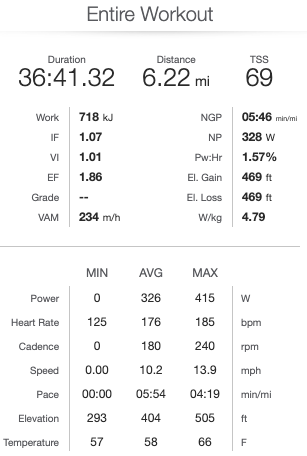I’m doing a hilly road 10k on Sunday and I’m seeking advice on how to approach pacing with a power meter. I’ve never run a standalone 10k but my original plan was to maintain between 320-330w, based on the Stryd app’s analysis stating I can maintain 325w for a 10k.
However, this course is quite technical:
- The first 1.5 miles is a gradual uphill, with an average +1.5% grade.
- Then there’s a short -3% downhill that leads into a 0.2 mile +10% climb.
- The next 2.5 miles are steep ups and downs, with the steepest climbs at +8%.
- This is followed by a -11% descent.
- The rest of the course is a gradual net -1% downhill.
Here’s the course map. To confirm, this is not a trail run; the course is on a combination of roads and paved trails.
Below is the profile from Training Peaks. I did the course Sunday in 48min, with a NP of 262w (dark blue shading = elevation, purple line = power).
I use a single power target range for most races, but is there a different approach for a hilly race? Do I go out easier (maybe 310-320w), work the uphills in the 330w range, then blast the final 2 miles at 330w?
As background, I just ran a 1:19:30 half marathon 10 days ago on a flat course, with a NP of ~305w.


